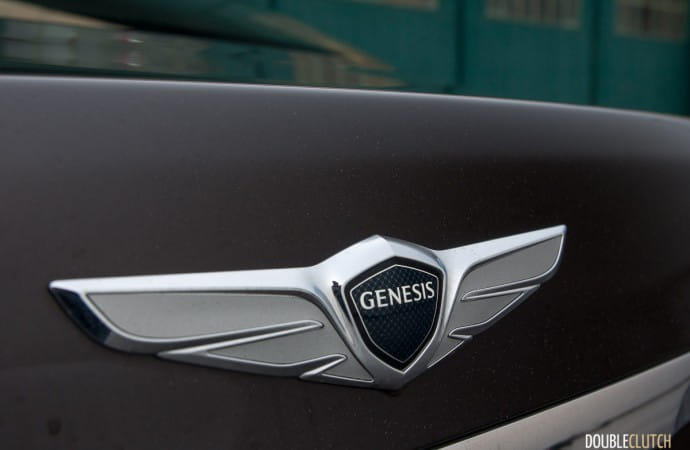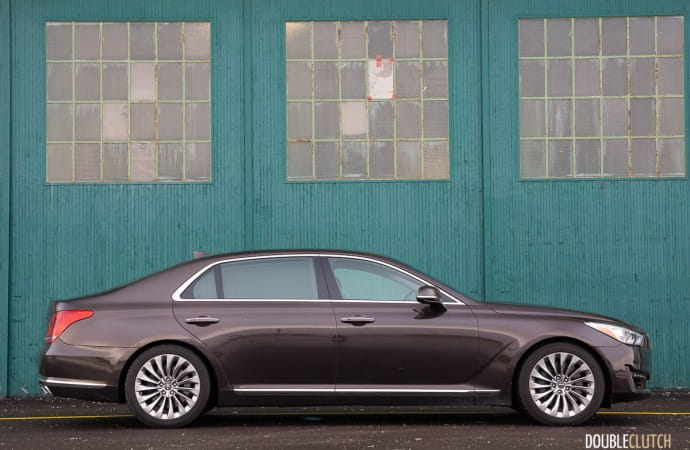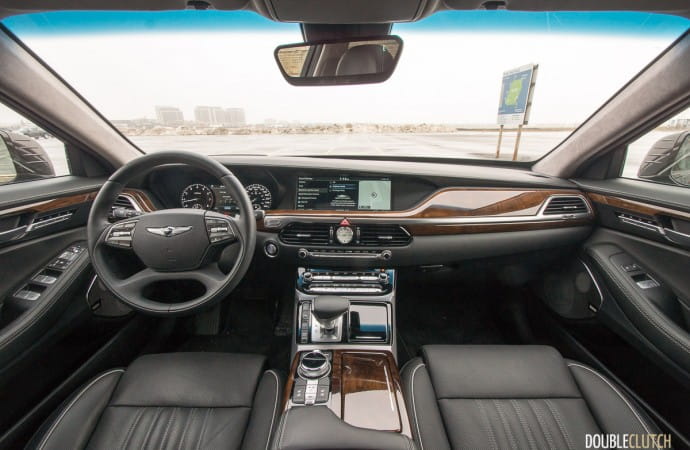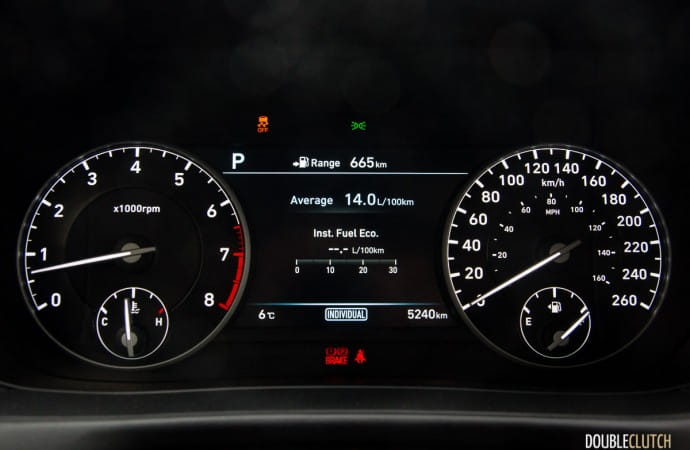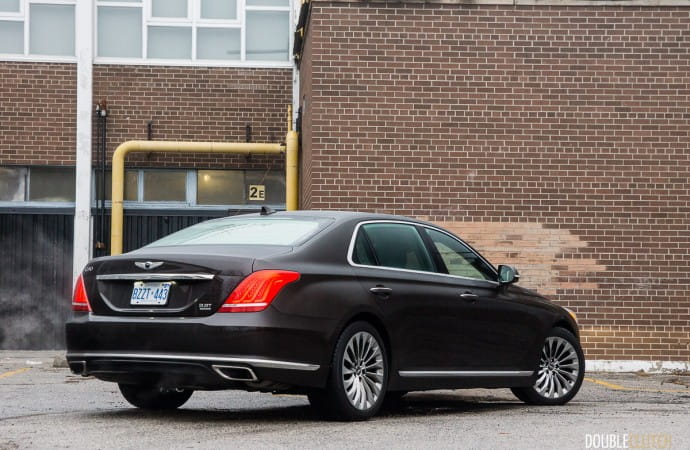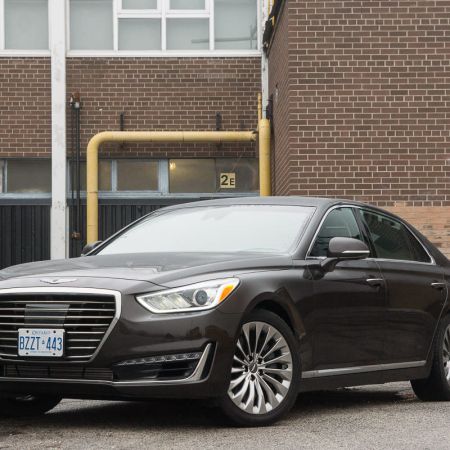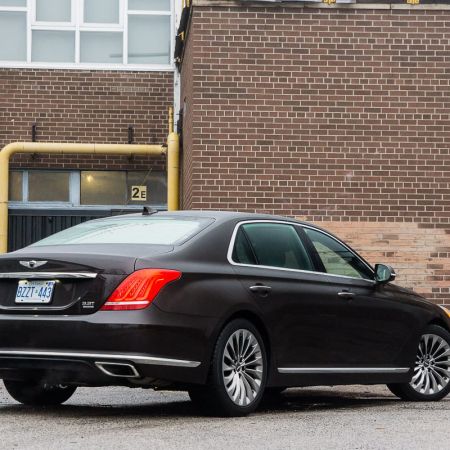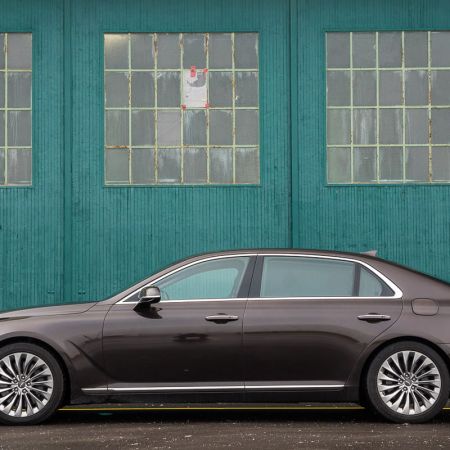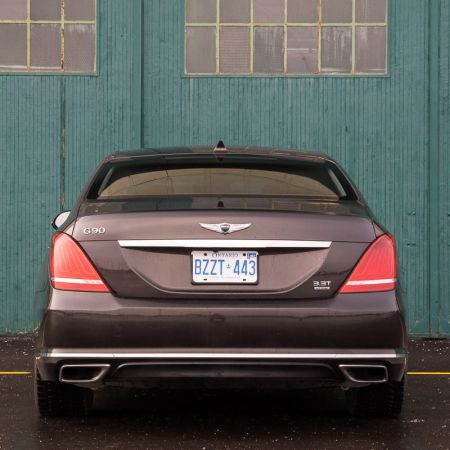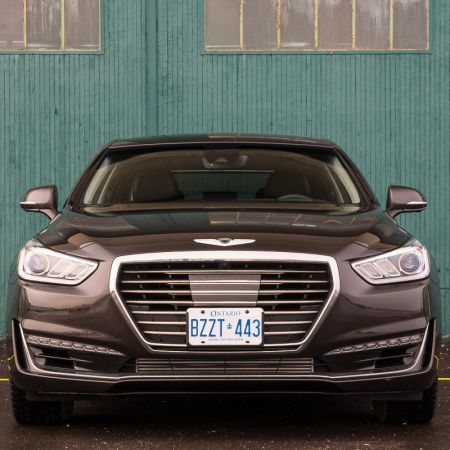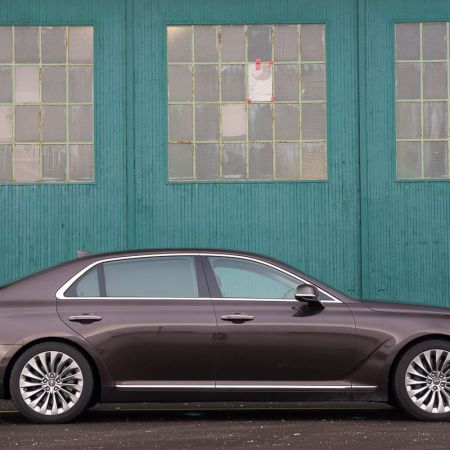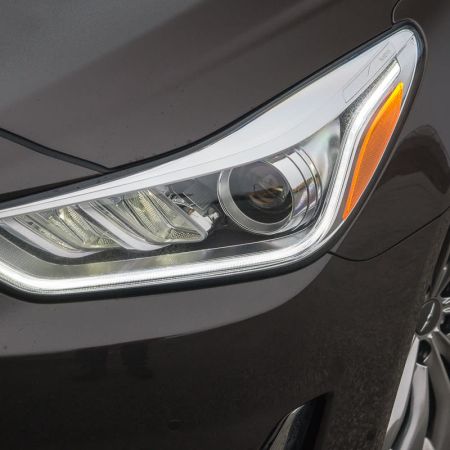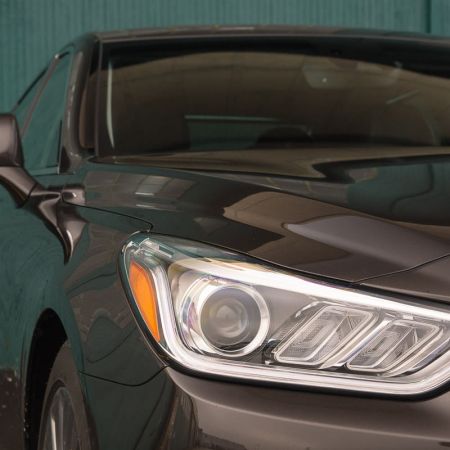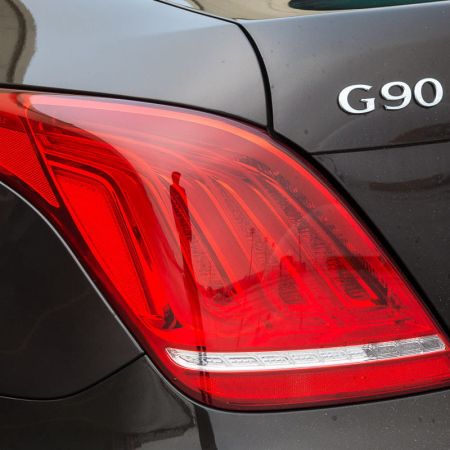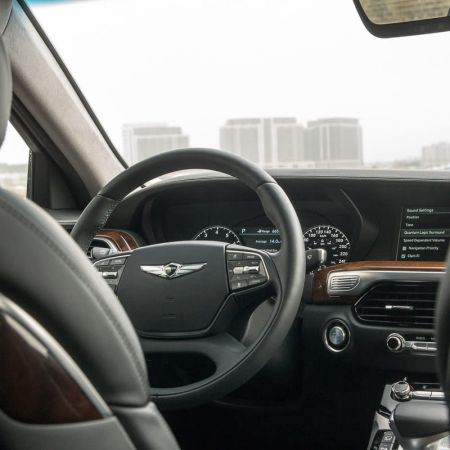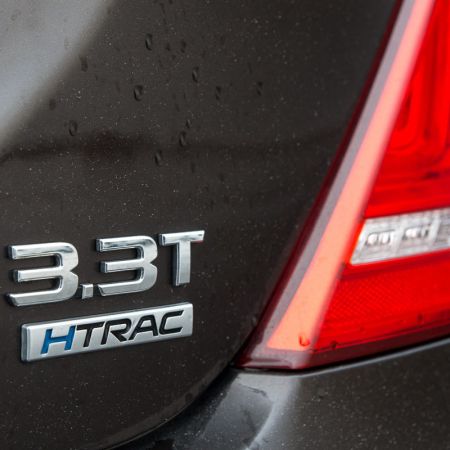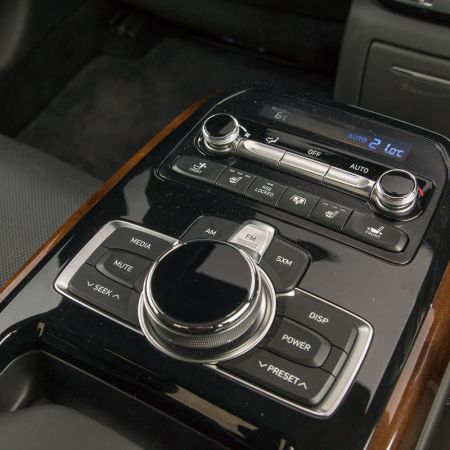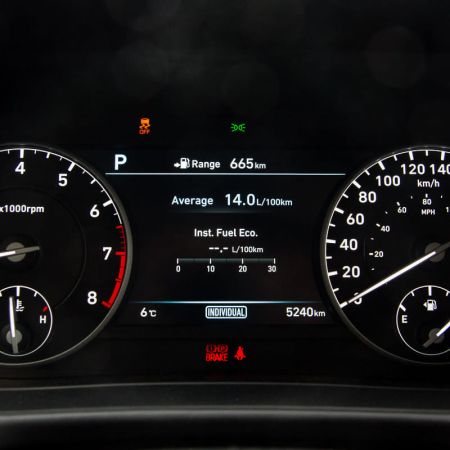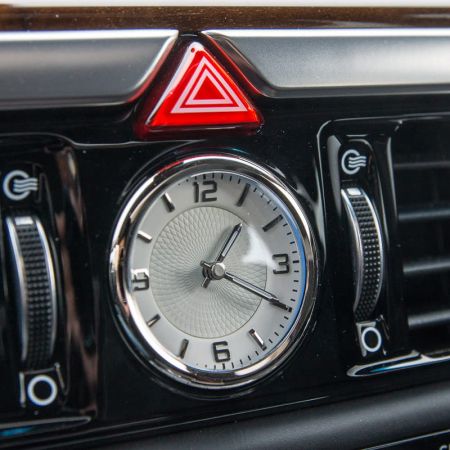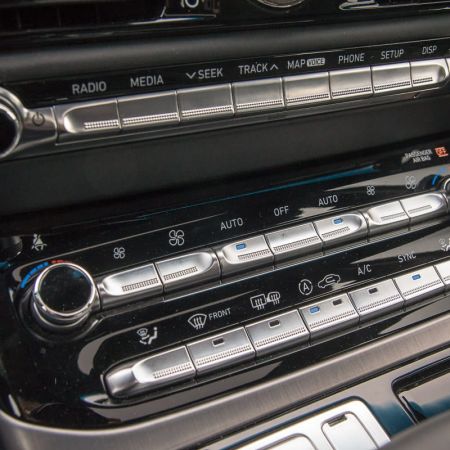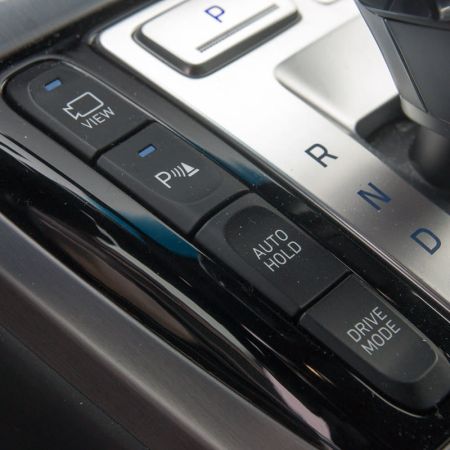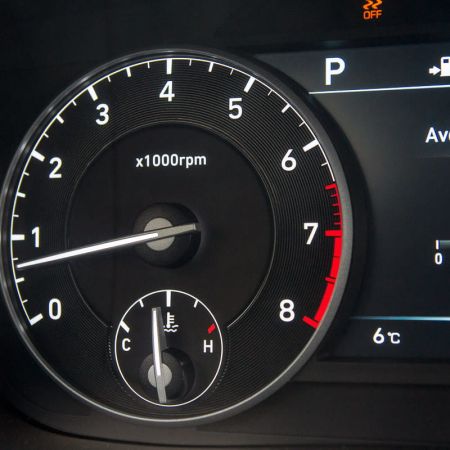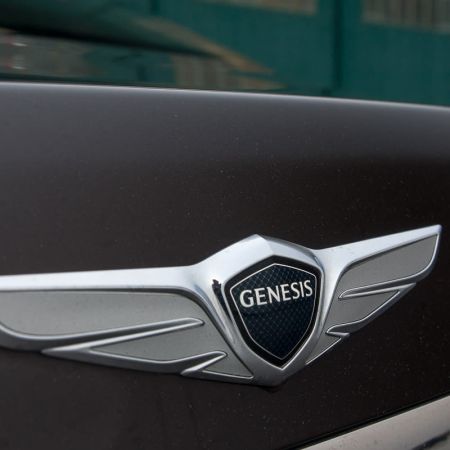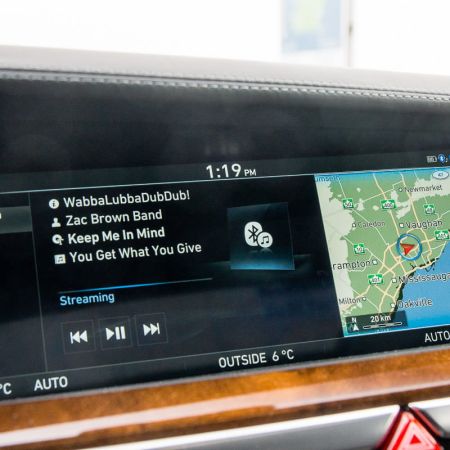Hyundai isn’t a company that likes to look at its past too much. You won’t find a mint-condition Pony in their corporate headquarters, nor will you find a Stellar. Same goes for the Excel. The Sonata is one of their nameplates that actually dates back to the late-1980s, but you won’t find an original car sitting in their lobby. They like to look forward, as a company that is not only growing rapidly, but increasing in influence with every single day. Their cars are generally accepted to be of good build quality with what looks to be good long-term reliability (see the Elantra, reviewed here), but that old stigma still remains at times.
Kia has pursued a slightly different strategy with some of their cars, like their flagship K900 (reviewed here). For up to $70,000, you get a superbly luxurious rear-drive executive car, complete with a 5.0L V8 and a genuine focus on rear-seat comfort. It’s a good effort by the brand, but when’s the last time you saw a K900 on the roads? BMW will happily sell you a four-cylinder 528i for the same price, and those are much more commonplace in the real world. The reality is, brand prestige still matters, and one of the biggest hurdles the K900 hasn’t really overcome is the “mainstream” car stigma that is applied to it.
Hyundai’s strategy lately has been somewhat different. Building on the success of the Genesis model nameplate (with both the Hyundai Genesis sedan, and the Hyundai Genesis Coupe), they did what many industry pundits predicted: the Genesis brand would be split-off into its own premium luxury brand. The Hyundai Genesis sedan would become the Genesis G80, and the replacement for the flagship Equus would become the new Genesis G90. We started a week with the Manhattan Brown Genesis G90 with the new Genesis Experience.
Typically built with premium design and materials in mind, the luxury car dealership is often the first impression prospective customers get. The Genesis brand prefers to do things differently, by challenging that status quo. The Genesis Experience aims to increase convenience by bringing the dealer experience to you, rather than the other way around. Customers book an appointment, at their convenience, with the Genesis At Home service. Representatives will arrive either at your home or office for a demonstration. If you like what you see, there’s one single, guaranteed price, no haggling necessary. Eliminating the traditional dealer experience is an ambitious undertaking, but the theories and logic behind the execution are sound, progressive, and is sure to be a good talking point.
The Genesis G90 serves as the flagship of the new Genesis brand, and as such, is a fairly large car. The G90 only comes in one length – long. Measuring at just over 5200mm, it is just slightly longer than the Lexus LS460 (long-wheelbase) and in-between the short and long-wheelbase variants of the BMW 7-Series (reviewed here). As is typical for cars in this class, most of that length goes to increasing rear-passenger room – the wheelbase is a generous 3159mm – once again longer than the Lexus. What Genesis has done a good job with, is accentuating the rear-drive proportions: the front axle is pushed far ahead towards the front of the car, making for a shorter and more “desirable” front overhang.
Overall, the Genesis G90 features a restrained look that borders on conservative, if not slightly anonymous at times. The large front grille borrows some cues from Audi’s large corporate front grille, and the taillights also borrow the basic shape from the Jaguar XJ (reviewed here). The original Hyundai Genesis didn’t even feature a front emblem identifying the make – the G90 doesn’t suffer from this sort of modesty, with a large Genesis crest on the leading edge of the hood. The only real drawback to the Genesis G90 will depend on the front license plate regulations where you live. In Ontario, front license plates are required by law, and its location in the front grille somewhat detracts from the G90’s clean lines.
The Genesis G90, like the Hyundai Equus before it, focuses primarily on occupant luxury, and in true Korean fashion, the right rear occupant is the priority. Top-grade Nappa leather is just about everywhere, with premium soft-touch materials even, lower down at the bottom of the interior door cards. Real wood is used in generous proportion, but it isn’t of the open-pore variety that is all the rage these days. Even if you have to drive yourself around, the G90 does a great job. The front driver’s seat (heated and ventilated) can be adjusted in up to 22 ways, and isolation from the outside world is ensured by double-pane glass and active noise cancellation. Soft-close doors are standard equipment, though it took more finesse to find the right point where the door would electronically pull itself closed. The Germans do a better job here, in this case.
Top quality materials aren’t much of a surprise, and considering the brand’s lofty aspirations, that’s worth some credit. The Lexicon audio system features 17 speakers, and 7.1 channels of output. What surprises is how good it sounds, on an overall level. It doesn’t boast about having a ludicrous amount of speakers (see the Cadillac CT6 with its Bose Panaray system), but everything just sounded fantastic. One setting is the QuantumLogic Surround Concert Hall mode, and while it’s often difficult to objectively describe sound output, enabling this option essentially makes the doors disappear, from an acoustic point of view. You are no longer able to really pinpoint where the speakers are, or where the sound is actually coming from. It really feels as if you are a live studio audience.
The Genesis G90 sees the launch of a new 3.3L twin-turbo V6, and an updated eight-speed automatic (built in-house). Featuring twin single-scroll turbos (fairly small ones – good for reducing turbo lag), direct injection, and all the latest technologies, it puts down 365 horsepower at 6000RPM and 376 lb-ft of torque from 1300-4500RPM. It is down on power somewhat compared to some of its competitors, but the torque delivery borders on effortless, like that of a lazy V8.
For $3,000 more, you get a 5.0L naturally-aspirated, direct-injected V8, producing 420hp. While the horsepower figure with the V8 is higher, the torque numbers tell a different story. The 383lb-ft it produces is a smidgen more than the turbo V6, but that torque arrives at a lofty 5000RPM. This is a V8 that likes to rev, so you’ll have to wind it out to get to the higher output figures. The turbo V6 delivers a better experience, with all that torque available essentially off idle speeds. The V6 sounds a lot like the naturally-aspirated Lexus 3.5L V6 (reviewed here), and that’s not a bad benchmark, either. For those who value the sound of their luxury powertrains, there isn’t much substitute to the V8. The fact that neither the Cadillac CT6 nor the Lincoln Continental offer V8s at this time is somewhat interesting.
Regardless of engine, power is sent to all four wheels via an eight-speed automatic transmission. The G90’s HTRAC AWD system is standard equipment in Canada, but is optional in the United States. Going back to that in-house eight-speed automatic transmission, it’s clear that the Koreans have done their homework in improving their hardware. Combined with the smooth torque curve of the V6, the eight-speed auto delivers seamless gear changes. The all-important first to second gear shift is especially smooth – something some other transaxles struggle with, especially under load. It moves up to the #2 spot in my books in the longitudinal RWD/AWD flagship class, behind the ZF 8HP.
Genesis rates the G90, with all-wheel drive and the 3.3L twin-turbo V6 at 13.7L/100km in the city, 9.7L/100km on the highway, and 11.9L/100km in a combined cycle. During my cold week with the G90, I managed an indicated average of 13.5L/100km, with quite a bit of low-speed commuting to and from downtown Toronto. For comparison, the optional 5.0L V8 is rated at 15.2L/100km in the city – expect worse figures if you like to dip into the throttle for that eight-cylinder rumble. One thing the G90 is missing is an idle start-stop system. Most of us in the DoubleClutch.ca offices are not big fans of idle start-stop systems, but they do help when you sit at long red lights. There is a brake-hold function that allows you to rest your right leg when at these long red lights, but the engine will stay running. The G90 will hold 83L of premium 91-octane fuel.
Unlike much of the competition, Genesis seeks to keep the pricing structure for their flagship product simple. The “base” G90 with the 3.3L turbo V6 starts at an as-tested $84,000 before taxes and additional fees. There are no option packages – you just choose the engine of choice, and the interior/exterior colour scheme. It’s refreshing, because a lot of the standard equipment that the G90 has, often are optional extras elsewhere. If you prefer the V8 (or rear ventilated seats, with recline function), that price jumps to $87,000.
The G90 has the capability, and execution to disrupt the old guard in the flagship luxury car business. Established names like the Mercedes-Benz S-Class start at over $100,000 these days (before any options), so it’s a little difficult to seriously include them in the conversation. Cadillac’s CT6 occupies a much larger price bracket, with a much lower base price, but the base model only comes with a turbocharged four-cylinder engine. The fully loaded CT6 Platinum is more comparable, but at over $99,000, it still comes with some (small) shortcomings, namely the powertrain. On the other hand, it does have the road presence that the G90 doesn’t. A fully-loaded Volvo S90 doesn’t seem to be a likely competitor, but comes in at about $86,000. It also features four-cylinder power, but its unique take on forced induction keeps things interesting. The Scandinavian design really is stunning, but you’ll have to be okay hopping into a smaller car to get it.
The 2017 Genesis G90 3.3T ends up punching well above its weight, not only in terms of value for your money, but also for the attention to detail, to a point. While this does a good job increasing brand awareness (by lowering the age of the average owner), supreme ride comfort suffers, generally speaking. The G90 doesn’t try to be anything it isn’t, and its focus on luxury and the execution (see the Genesis Experience) really shows. It doesn’t quite have the eye-catching road presence some other cars do, so it’ll be a question of how much this matters to you. Overall, it’s not quite perfect, but coming from a brand that is quickly starting to gain traction, the Genesis G90 is a very superb effort.

